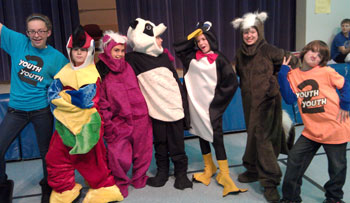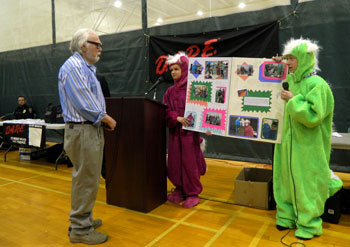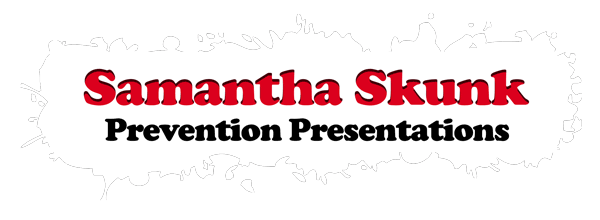 Samantha Skunk presentations bring student leaders/presenters to children as a lovable magenta skunk and as other characters in the story. The story is generally presented by students in full costume.
Samantha Skunk presentations bring student leaders/presenters to children as a lovable magenta skunk and as other characters in the story. The story is generally presented by students in full costume.
 Samantha Skunk was created by University of New Hampshire Professor William Scott (ret.). Mr. Scott was inspired to create Samantha as a “no smoking” program by his daughter who suffers from asthma. This resulted in the original Smoking Stinks version of Samantha Skunk.
Samantha Skunk was created by University of New Hampshire Professor William Scott (ret.). Mr. Scott was inspired to create Samantha as a “no smoking” program by his daughter who suffers from asthma. This resulted in the original Smoking Stinks version of Samantha Skunk.
It was piloted by Dover (NH) Youth to Youth in 1993, shortly after it was created, and it has been in regular use in Dover ever since. In June of 2014, Dover Youth to Youth purchased the Samantha Skunk Program from the author and creator, William Scott.
Dover Youth to Youth has developed two additional presentations involving the Samantha Skunk characters. These follow the same tone, style and story length, but they have different messages for the students. In 2009, Youth to Youth created the Medicine Safety version. In this story, the Samantha magenta skunk tries medicine that wasn’t provided by an adult and they made her turn green and very sick. With the help of other characters in the story, Samantha learns that someone else’s medicine can be bad for her, that she should never give herself medicine without an adult saying it is OK, and to tell an adult if she finds medicine or a pill at home.
The Samantha Skunk Loves Her Os version of the program was created by Dover Youth to Youth in 2012. Its primary focus is on lung health, exercise and the harm that smoking (anything) can do to your lungs and your ability to run and play sports. Although most 2nd graders assume we are talking about tobacco, we are deliberately non-specific about what is being smoked. Our message is that smoking anything is not good for your body, lungs and athletic ability.
It is the intent of Dover Youth to Youth to continue to provide these lessons as part of our early elementary message on substances and health in Dover, NH. We also intend to continue Professor Scott’s practice of making the Samantha Skunk Program materials available throughout the country to communities who want to use it to bring these messages to other children as well.

